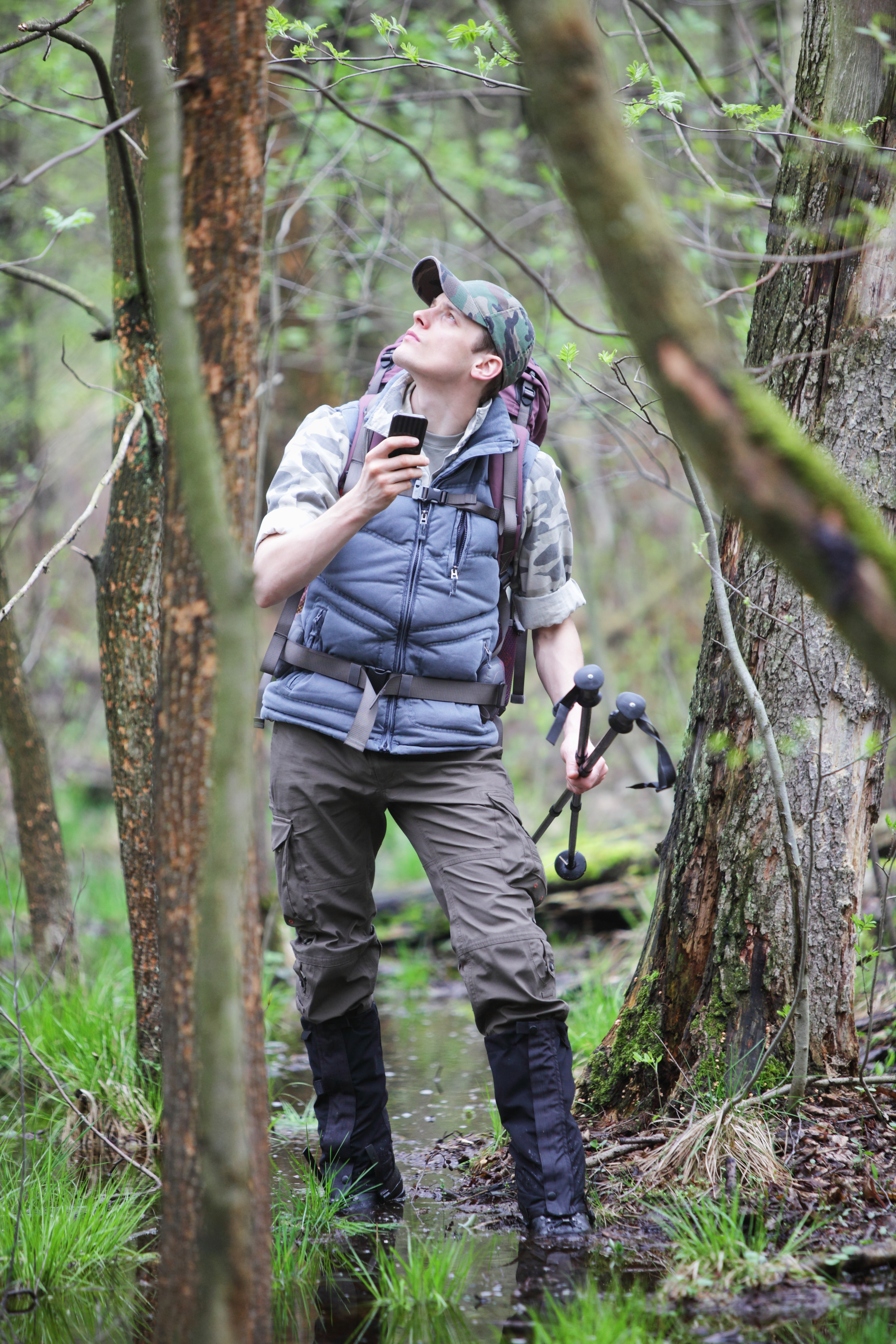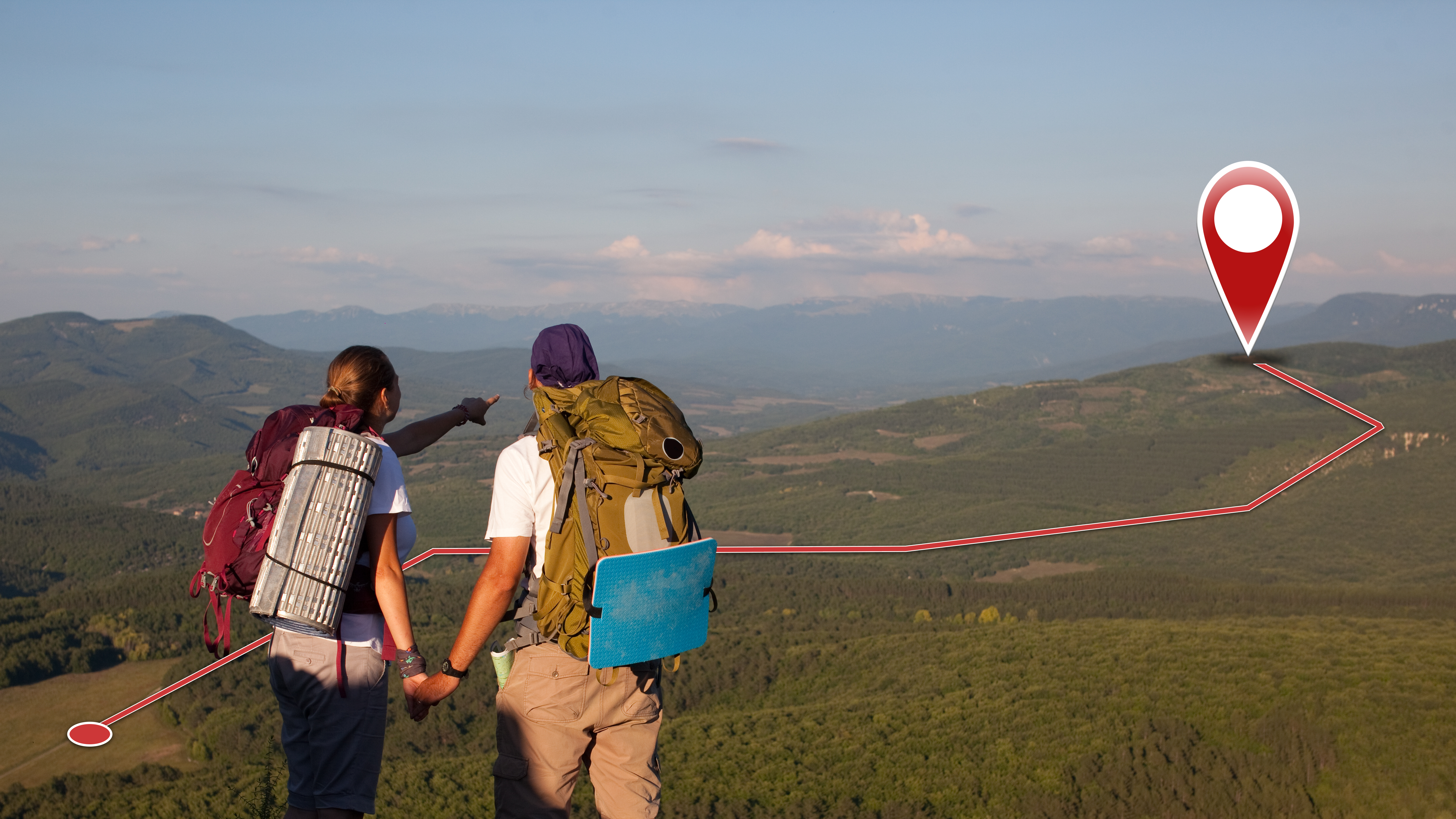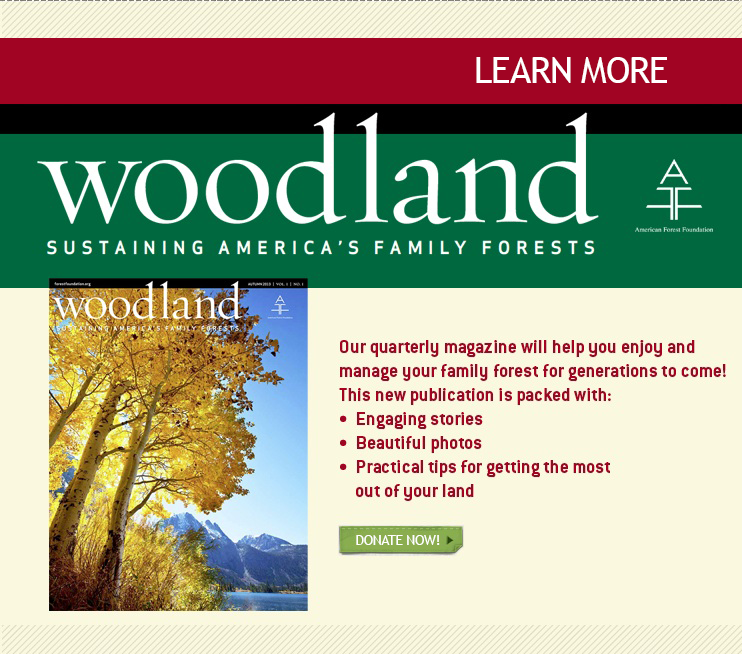Searching for Treasure on Your Tree Farm

- By Madeline Bodin
If you visit Karen and David McNutt's Tree Farm on the shores of Sebago Lake in Maine, you'll find not only a beautiful, well-managed woodland but, if you know where to look, hidden treasures. Don't bring a shovel, because the first rule here is that the treasures are never buried. And don't expect to get rich, because the treasure is a box of trinkets that may include a string of beads or a small toy. If you take one of these trinkets, you are expected to leave something of at least equal value in return.
The hidden treasures at the McNutt’s Tree Farm are geocaches (pronounced jee-oh-cashes). You can find the coordinates of these geocaches on the Web at www.geocaching.com, download them into your Global Positioning System (GPS) unit or smartphone and then search for them.
The McNutts have hidden eight geocaches on their land. The listing for each of these on geocaching.com says, “Welcome to our Tree Farm! This cache is part of a winter-friendly and kid-friendly grouping.
Grab your snowshoes or your cross-country skis and enjoy our trails.”
“When we first put our caches out, I did it on snowshoes in the middle of the winter,” says David McNutt. “There is a local gentleman who likes to be the ‘first to find’ new geocaches, but he didn’t bring snowshoes. He waded through the snow the whole way, eight-tenths of a mile, but got them all. Some people get almost to the fanatical side of things.”
Geocachers call their sport “a real-life treasure hunt.” Abby Wolfe, president of the Washington State Geocaching Association, thinks of it as “goal-oriented hiking.” However you frame it, it’s an activity that is exploding in popularity. Geocaching didn’t exist before accurate GPS readings were declassified by the U.S. military in 2000. Now, according to Groundspeak, the company that runs geocaching.com, there are more than two million geocaches in 185 countries, and six million geocachers worldwide.
Geocaching and Tree Farms have a special relationship. The first geocache, “The Original Stash,” was placed in May 2000 by Dave Ulmer, a computer programmer, on the Port Blakely Tree Farms near Portland, Oregon. Port Blakely Tree Farms is a family-owned company and consists of approximately 140,000 acres of forestland in western Washington and Oregon. Today there is a bronze plaque at the site, with a geocache nearby. Geocachers come from across the continent to visit.
Geocaching can help your family and friends make a connection with the natural world. If you choose, it can also bring the public to your Tree Farm, educate them about your work and send them to the beautiful locations that you wish to show off to every visitor. If you don’t want outsiders on your property, you can keep the GPS locations private (and check to make sure that no one has placed an unauthorized geocache on your land).
The best way to start geocaching, says Stephen Connolly, president of the Minnesota Geocaching Association, is to go out and find some geocaches. “You can see what’s out there, and see how it’s done,” he says.
To do this you will need either a GPS unit or a GPS app on your smartphone. The GPS unit is more accurate because it has a better GPS chip inside. You will also need to register on a geocaching website, because that’s how locations are shared. Www.geocaching.com is the oldest and most popular, but there are alternatives (see Resources).
At www.geocaching.com you enter your ZIP Code, or the name of your town or another location, and get a list of geocaches nearby. You may be surprised how many geocaches there are and how close you are to one. (I entered my ZIP Code and discovered there was a geocache within walking distance of my rural, remote Vermont home.)
Going onto a geocaching website is also the way to check to see if any geocaches have been placed on your property. Geocachers are supposed to get permission from property owners, and www.geocaching.com even has reviewers who enforce that rule, but mistakes can be made and lies can be told.
 “It’s important to know there are guidelines,”
says Connolly. In addition to asking for permission from owners of private
property, he notes, “you can’t dig holes. You basically want to leave nature
untouched.” (Rules on government-owned property vary. The National Park Service
forbids hiding geocaches on its land, for example. Some state parks forbid
geocaches, while others require a permit.)
“It’s important to know there are guidelines,”
says Connolly. In addition to asking for permission from owners of private
property, he notes, “you can’t dig holes. You basically want to leave nature
untouched.” (Rules on government-owned property vary. The National Park Service
forbids hiding geocaches on its land, for example. Some state parks forbid
geocaches, while others require a permit.)
When picking your first geocaches to find, pay attention to the difficulty rating and the size of the container. Small containers (they can be the size of a film canister) are more difficult to find. “Do the easy ones first,” Connelly says. There is a knack to finding geocaches that needs to be developed with experience. Over-confident beginners tend not to last.
If you don’t want to open your land to the public, you can create geocaches, but then share the coordinates only with family and friends, without publishing them online. If you do welcome the public to your property, however, geocaches create an incentive to visit.
If you are in a remote location, creating several geocaches on your property will give people more of a reason to visit you, Connolly says. One option is a “multi-cache”— several locations that lead to one final container.
Teri Anderson, the former president of the Minnesota Geocaching Association says that “power trails” have many geocaches along a single trail. Each cache must be one-tenth of a mile, or 528 feet, from the nearest cache to meet the guidelines enforced by online reviewers. Minnesota has a power trail in the geocaches placed along the Paul Bunyan Trail, she says. Geocachers love them.
Your geocaches can lead people to the most beautiful locations on your land, introduce people to your trail system or they can tell a story. A series of geocaches can introduce people to different species of trees or show different forest management techniques.
The Geological Society of America was quick to recognize that geocaches could be a powerful educational tool. In 2004, the society introduced a program that leads people to geological sites called EarthCaches. EarthCaches use notes on the Web page where the coordinates of the site are listed and signs on the location to educate visitors about geology. You need to answer questions to get credit for visiting. Today there are 16,200 EarthCaches that have been found by four million people.
Washington State Parks celebrated their centennial year in 2013 by challenging the public to find 100 geocaches in 100 state parks. Geocachers who visited all 100 locations received a gold-colored coin. Those who visited 50 locations received a silver-colored coin. “People love to get stuff,” says Ranger Christina Dinzl-Pederson of Washington’s Cama Beach State Park. In addition to coins, t-shirts are also a big draw. A group of Tree Farmers who wanted to recreate the Washington program’s success could work together to do something similar, says Dinzl-Pederson.
Landowners each have their own requirements of how they want geocaches to work with their land and existing trails, says Wolfe. “I work with a number of park systems, Weyerhaeuser, Hancock and other timber companies.” Some groups don’t want visitors to leave the trail, others don’t care, she says. Ironically, the most erosion damage is caused by geocaches that are about five feet off the trail, Wolfe has found. That’s a short enough distance that a bootleg trail (also known as a social trail or desire path) will form as each visitor uses the exact same path to the cache. If you don’t want a bootleg trail, place your geocache more than 50 feet off the main trail—each person will then take a slightly different path to the cache.
If you decide to log in an area where you had previously placed a geocache, you can have the site removed from the list. Because the coordinates are downloaded and people travel, Connolly warns, it may take a few days for people to stop showing up after you remove the listing. If you like the idea of geocaching, but don’t like the idea of using a GPS unit, “questing” is a related activity that doesn’t use GPS. Questing is based on the British game of letterboxing, says Laura Dintino, Valley Quest manager for Vital Communities, the nonprofit organization that created the first quests. Every quest brings participants to several sites in one area through a series of clues. The locations always tell a story, and the clues are typically in rhyme, says Dintino. “People who write quests have an interesting story,” she says. “Let that come through in writing the quest, and people will love it.”
People also appreciate when quests last from an hour to an hour and a half, but no longer. Dintino says that quests are popular with parents of young children, and with seniors, so keep their needs in mind.
“Quests show you places,” says Dintino. “Some are whimsical, others are more serious. It’s cool for people to learn a little something, perhaps by seeing a burl on a tree, someplace where a squirrel lives, or a stone wall where a farm used to be.”
In addition to geocaching, letterboxing and questing, there are many other similar activities that make a game or sport of route finding, including benchmarking, trig-pointing and way-making. Orienteering is an established sport that works on similar principles, but is a race and involves finding your way with a map and compass. Munzee is a scavenger hunt that uses smartphones.
Despite the many alternatives, the special relationship between geocaching and tree farming remains. David McNutt not only welcomes visitors to his Maine Tree Farm with geocaches, but is an avid geocacher himself. He teaches geocaching to local scout groups and helps them create their own caches.
For McNutt, geocaching embodies the spirit of his family’s Tree Farm. “A Tree Farm is something to be shared, not hidden,” he says. “Our land is a thing of pride. If you have something nice and it’s not shared, it’s not worth having.” Geocaching, he’s found, is the best way to do that.
Resources
One of the best sites for learning about geocaching, and finding (or registering) public geocache locations is www.geocaching.com. (If you’d like to set up geocache locations on your Tree Farm but don’t want strangers on your property, don’t post the coordinates online—simply share them individually with your family and/or friends.)
Other websites with information about geocaching and forums for posting and finding geocache locations:
“`Grandpa, can you take me?’ Those are the magic words,” says Patrick Garin of Bloomington, Minn. Garin is an avid geocacher, and was thrilled when four of his eight grandchildren, as well as two of his four children, became interested in the activity. Geocaching is a great way to get children interested in the outdoors. And it appeals equally to boys and girls, as well as to men and women, based on Garin’s experiences. Different aspects of the sport engage different ages. Young children can be highly motivated to hike when they know a new toy, even a small one, is waiting for them. Teri Anderson’s son loves the “pirates searching for treasure” aspect of geocaching. Slightly older children are intrigued by the GPS technology and may see geocaching as the ultimate electronic game. Garin nurtured his grandchildren’s interest in geocaching by giving each of them his or her own GPS unit. “That’s important,” he says. Prices start at about $100 for the units, but for Garin, having his grandchildren asking to spend time with him was well worth it. “I would highly recommend geocaching to any grandparent,” he says.










Comments: